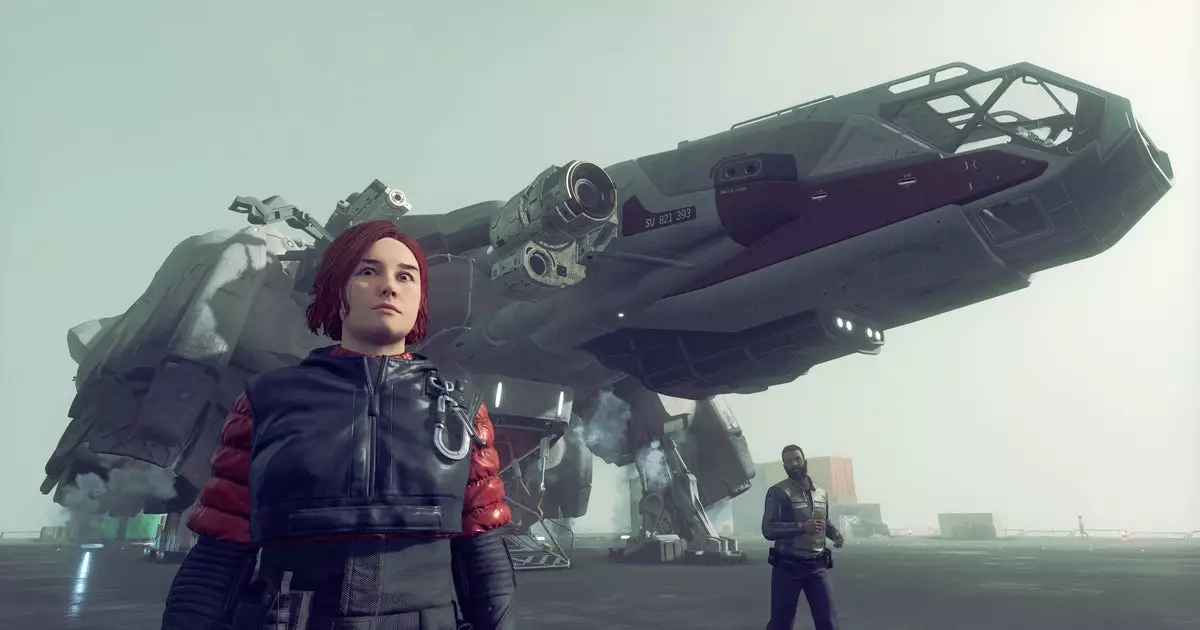Starfield, Bethesda’s ambitious foray into the vastness of space exploration, has come under scrutiny not only for its expansive scope but also for the emotional void that many players have reported experiencing. The game, praised for its grand ambitions, has often been described as feeling “small, cold, and unlived in,” a sentiment articulated by game reviewer Alice Bee. While the scale of the universe presented in Starfield suggests a rich tapestry of stories waiting to be uncovered, the reality seems to be that the game lacks the depth and engagement that players desire. The overarching question remains: Did the absence of visceral elements, like gore, compromise the game’s potential to engage and entertain?
The Gore Debate: A Technical Decision
In a recent discussion on the Kiwi Talkz podcast, Dennis Mejillones, a former senior artist at Bethesda, shared insights into the development of Starfield. He revealed that there were initial plans for the game to incorporate more graphic, violent content, including decapitations. However, the developers ultimately scrapped these ideas due to technical constraints and concerns regarding character models and interactions within the game world. Mejillones noted the complexity of accounting for different character suits and helmets, which complicated the implementation of such violent mechanics.
This consideration challenges the notion that gore is merely a superficial addition to a game. Instead, the technical limitations faced by the developers highlight a pivotal aspect of game design: the need for coherence between gameplay mechanics and thematic elements. While some titles successfully integrate bloodthirsty action within their narratives, Starfield’s ambition to create a more realistic and subdued atmosphere, inspired by influences like The Expanse and Star Trek, clashed with the potential inclusion of over-the-top violence.
A Missed Chance for Engagement
Despite the evident reasons for avoiding more graphic content, one cannot help but feel that the exclusion of gore in Starfield detracts from the overall experience. While a gorier approach wouldn’t necessarily rectify the issues plaguing the game’s narrative engagement, it begs the question of whether such elements could have provided a more stimulating and interactive environment. Players often look for moments that provoke emotional reactions, and the suggestion of violence and chaos may have injected a much-needed adrenaline rush into the game’s quieter moments.
Moreover, the contrast drawn between Starfield and other Bethesda titles, such as Fallout 4, underscores the lost potential for humor and absurdity that could have made the experience more vibrant. Fallout’s integration of dark, tongue-in-cheek humor in its combat mechanics stands in stark contrast to Starfield’s more somber narrative approach. The game’s deliberate choice to go low-key leaves a bittersweet aftertaste, as many players yearn for that chaotic freedom, which could elevate the otherwise mundane aspects of exploration.
Ultimately, Starfield’s journey through the cosmos has showcased both the heights of ambition and the depths of disappointment. While technical limitations shaped the final product, the absence of gore and impactful encounters has left players feeling less engaged and less invigorated in their exploration of this galaxy. The missed opportunities for visceral interactions serve as a reminder that while ambition is commendable, it must be paired with thoughtful execution to truly resonate with a player base eager for connection and excitement in an ever-expanding universe.

